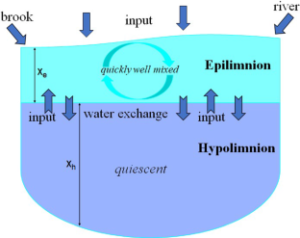Objective
To design and deploy artificial intelligence and mathematical methodologies and technologies to investigate and mitigate the impact of climate change and anthropogenic disturbances on aquatic ecosystems.
Subproject 1: Adaptations of fish and fishing communities to rapid climate velocities
Objective:
The objective is to leverage mathematical and artificial intelligence models to provide an understanding how climate change and fishing interact to affect the long-term sustainability of marine populations and the ecosystem services they support.
Research Questions include:
- How do the interacting impacts of fishing and climate velocity affect the abundance and distribution of marine fish and invertebrates?
- How do fishers and fishing communities adapt to shifts in species ranges and abundances?
- Which institutions create incentives that sustain or maximize the value of natural capital and comprehensive social wealth in the face of rapid climate velocities?
Subproject 2: Modelling the dynamics of phytoplankton
Objective:
To employ mathematical and artificial intelligence methodologies to investigate the effects climate change, anthropogenic disturbances, agricultural activities and environmental parameters (such as phytoplankton death rates, vertical turbulent diffusion rates, sinking/buoyant velocity, depth of water column, light input intensity, and concentration of dissolved nutrients at the bottom) on phytoplankton bloom or the vertical distribution of phytoplankton.

Selected Publications related to the theme
- Kong, J. D., Wang, H., Siddique, T., Foght, J., Semple, K., Burkus, Z., & Lewis, M. A. (2019). Second-generation stoichiometric mathematical model to predict methane emissions from oil sands tailings. Science of the total environment, 694, 133645.
- Kong, J. D., Salceanu, P., & Wang, H. (2018). A stoichiometric organic matter decomposition model in a chemostat culture. Journal of Mathematical Biology, 76, 609-644.
- Kong, J. D. (2017). Modeling microbial dynamics: effects on environmental and human health.
